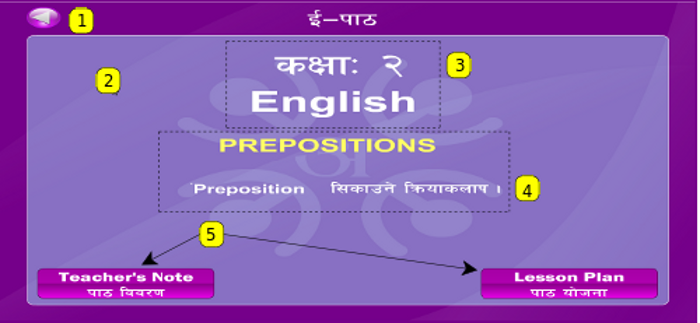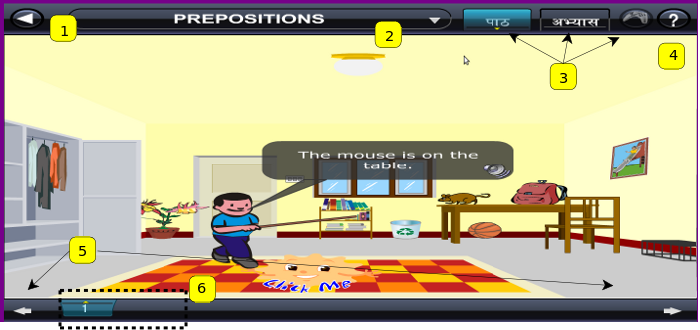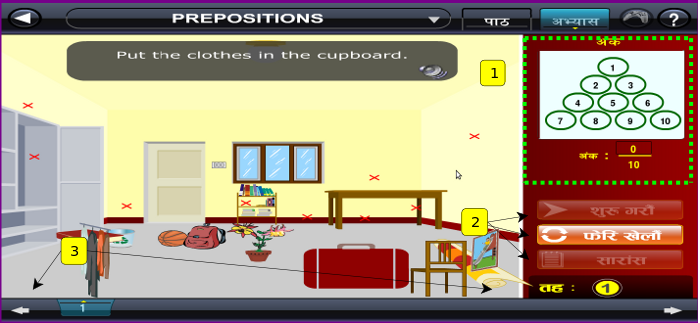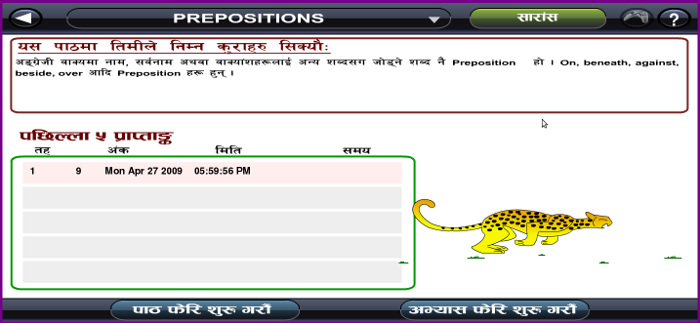Karma:Anatomy of a Karma Lesson
Subset of an Activity
The name "activity" in the Sugar context roughly refers to a program with the following attributes:
- It can be launched from the Activity Circle or journal
- Is installed through an XO bundle and can be removed with the "minus" icon
In contrast, a Karma "Lesson" is much more granular than a Sugar Activity. A bunch of related of Karma lessons will be aggregated into a single Sugar Activity. Karma lesson are small, discrete learning units, that introduce important concepts and give the student an opportunity to work with those concepts. Additionally, a lesson plan and Teachers' Note should be included in each Karma Lesson. These documents help the instructor facilitate the lesson, whether in formal or informal settings.
A Karma Lesson consists of 5 sections
- Introduction - Identifies the lesson and has quick links to Teacher's Note and Lesson Plan
- Reading - Can be passive or interactive but no information is recorded for the Summary. The student learns about the basic concepts in this section.
- Game (optional) - This is a fun game. May be used as a reward for good results in the Exercise
- Exercise - The student can test her knowledge in this interactive exercise. Results are recorded for display in the Summary.
- Summary - Provides a summary report on how the student did on the exercise. Can provide suggestions on how the student can improve.
There are 4 widgets in a Karma Lesson that deserve special attention
- Main Navigation
- Help Dialogue
- Page navigation
- Scoreboard
The example provided here is an Epaath lesson created by OLE Nepal in partnership with the Nepali government. Dr. Saurav Dev Bhatta, Sunil Pokharel, Om Yadav, and Kamana Regmi designed this layout.
Introduction
1. The Back button. To return to a main navigation page
2. Background image. This is more important than one might first realize. The organization or government providing the activities will likely want to put their own custom image to "brand" the lesson. Additionally, a government insignia may reassure teachers that the material has been approved by the government.
3. Class Name and Subject
4. Name of Lesson and one line description
5. Links to pdf documents for Teacher's Note and Lesson Plan. Both should be stored locally
The Teacher's Note explains what concepts the lesson teaches and where it fits in the curriculum. The Lesson Plan provides an example of how the teacher can facilitate the lesson in the classroom.
Reading
1. Back button
2. Navigation to Teacher's Note and Lesson Plan
3. Section Navigation. These three icons allow the student to jump between the Reading, Game, and Exercise.
4. The Help button which opens an overlay
5. Navigation between "pages" in the Reading. The Reading section only has one page but most Reading sections have multiple pages.
6. Navigation by Page # rather than arrow buttons
Game
ToDo
Exercise
1. Scoreboard tracking the results of the students answers. A correct answer should not only change the scoreboard but say "correct" or "incorrect" each time the student enters an answer.
2. Control buttons for the Exercise. The first button is "Play", the second "Play Again", and the third goes to the Summary section. The summary section should be disabled until the student has completed the exercise.
3. Navigation within the pages of the exercise.
Summary
ToDo: label the components of the Summary page.
Help Dialog
ToDo
- Where to specify the license information? Perhaps on the Introduction?
- Is the Help Dialogue contextual? Does it provide different information depending whether you are in the Reading, Game, Exercise, or Summary?



